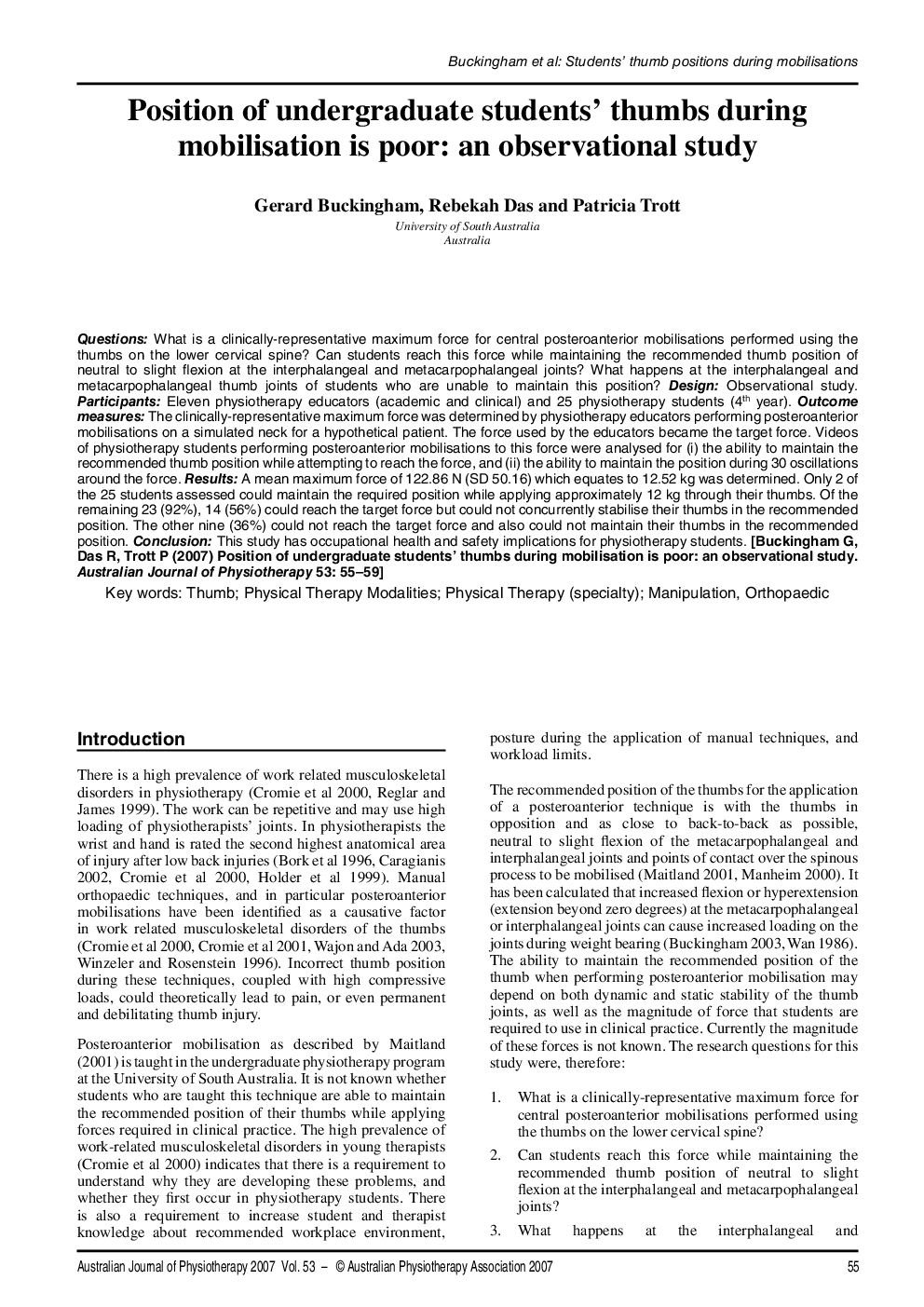| Article ID | Journal | Published Year | Pages | File Type |
|---|---|---|---|---|
| 2699236 | Australian Journal of Physiotherapy | 2007 | 5 Pages |
QuestionsWhat is a clinically-representative maximum force for central posteroanterior mobilisations performed using the thumbs on the lower cervical spine? Can students reach this force while maintaining the recommended thumb position of neutral to slight flexion at the interphalangeal and metacarpophalangeal joints? What happens at the interphalangeal and metacarpophalangeal thumb joints of students who are unable to maintain this position?DesignObservational study.ParticipantsEleven physiotherapy educators (academic and clinical) and 25 physiotherapy students (4th year).Outcome measuresThe clinically-representative maximum force was determined by physiotherapy educators performing posteroanterior mobilisations on a simulated neck for a hypothetical patient. The force used by the educators became the target force. Videos of physiotherapy students performing posteroanterior mobilisations to this force were analysed for (i) the ability to maintain the recommended thumb position while attempting to reach the force, and (ii) the ability to maintain the position during 30 oscillations around the force.ResultsA mean maximum force of 122.86 N (SD 50.16) which equates to 12.52 kg was determined. Only 2 of the 25 students assessed could maintain the required position while applying approximately 12 kg through their thumbs. Of the remaining 23 (92%), 14 (56%) could reach the target force but could not concurrently stabilise their thumbs in the recommended position. The other nine (36%) could not reach the target force and also could not maintain their thumbs in the recommended position.ConclusionThis study has occupational health and safety implications for physiotherapy students.
